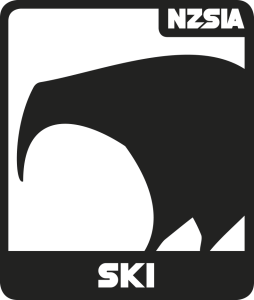Intro To Jumps
 What, Why, How
What, Why, How
What
Introduce air time to our students through natural and manmade features.
Why
Learn the anatomy of the feature/jump, the required skills and how to develop them outside of the park to safely build air awareness and confidence when leaving the ground.
How
Always negotiate the lesson goal to ensure students feel ready to jump and are excited to do so. Have students practise the range and rate of vertical movement needed to jump standing still, this can be done with skis on or off. Bring the same focus into movement, either in a traverse or down the fall line on a very gentle slope. Look for natural features, side hits, lips and rollers to increase air time. Develop accurate timing of extension by drawing lines/marking takeoffs on the snow. When confident, bring to an appropriate small park jump. This should be done when skill level aligns to the size of the available jump. Establish what to expect in each part of ATTL including speed, the four movements, the forces involved and timing.

 Technical Know-how
Technical Know-how
Skills
Expert control of the relationship between fore/aft and vertical range of movement is required to maintain balance through the transition to takeoff. A lowered stance is used throughout the run-in with a slow extension through transition towards the lip. The skier should aim to be in an athletic stance at the point of takeoff (when the toes reach the lip of the jump). Good fore/aft discipline is needed to ensure contact is maintained between shin and boot as the skier moves through the transition of the jump. Pressure should be felt increasing on the shin as the skier approaches the lip.
Ski Snow Interaction
Effort should be made to maintain even balance between the feet as we takeoff. Edges should be minimal to flat depending on direction of travel off the lip.
ATTL
Our approach is used to set speed and direction. This must be suitable for the feature we plan to use and can be tested by skiing parallel to the run-in both feeling and visualising the speed needed to comfortably make the landing. Takeoff must be centred, two footed and timed to the terrain. If approach and takeoff are well executed then balanced air time should be easy. Composure while off the ground is important and effort should be made to spot the landing. Landing should be absorbed through the ankles, knees and hips keeping eyes forwards for the next opportunity.
 Teaching Tactics
Teaching Tactics
Terrain
All skill development can happen on groomed terrain. Progression can begin on flat terrain and move to gentle slopes before taking it to rollers, lips, knolls and finally the park.
Class Handling
Care must be taken to stop in easily visible places. Avoid busy areas for traverse drills and always check uphill before setting off. Always start slow with natural features and be sure to check landings are clear before use. When moving to the park be sure to identify areas to stop out of the flow. Remind students of Park SMART and workshop each letter as a team.

